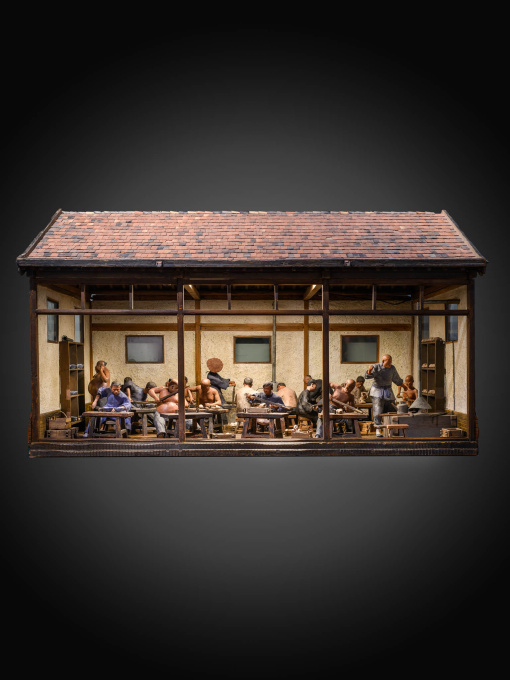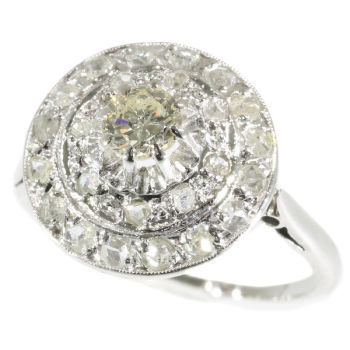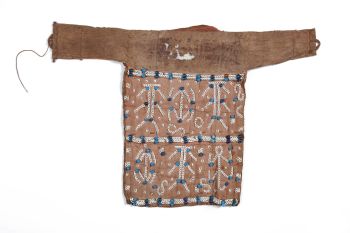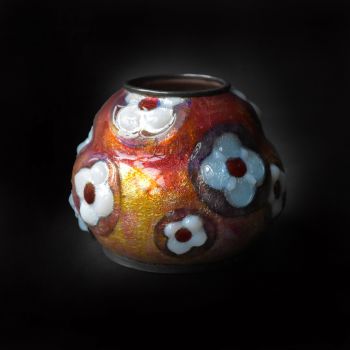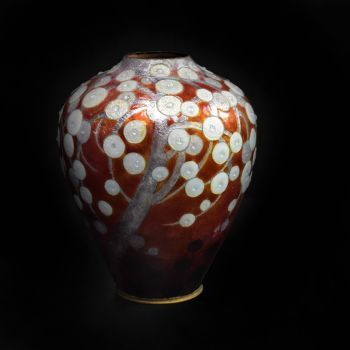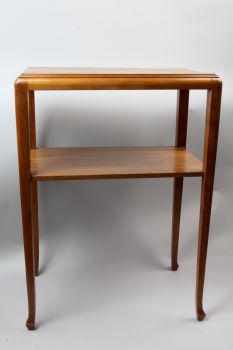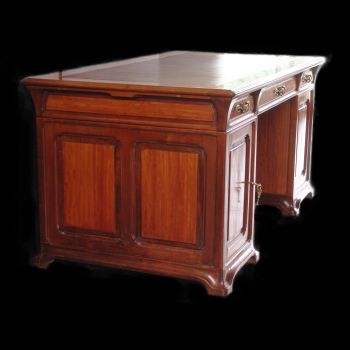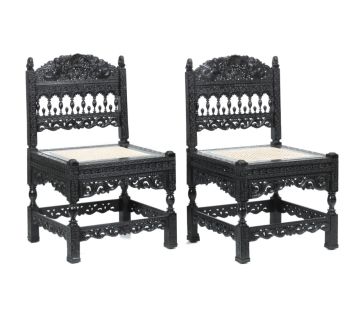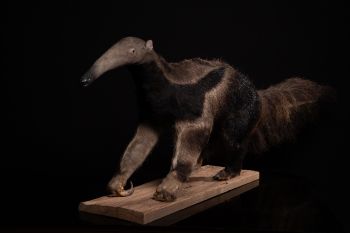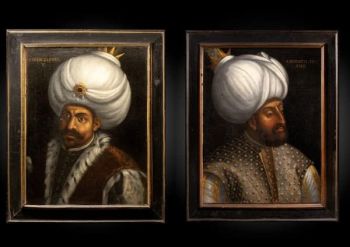19th C SCALED MODEL OF A CHINESE WORKSHOP WITH 17 POLYCHROMES TERRACOTTA FIGURES 1880 - 1900
Artista Desconocido
80 ⨯ 129 ⨯ 81 cm
ConditionVery good
Precio a consultar
Spectandum Gallery
- Sobre la obra de arteThis diorama of an artisanal workshop groups 17 Chinese polychromed-decorated nodding head figures dated from the 19th C. Thirteen have nodding heads and are portraits of individuals, and some served as generalized representations of their trade class and occupation. Terracotta figures became popular as objects of curiosity that communicated the costumes and customs of Chinese culture. These figures were usually constructed by moulding clay and were then allowed to air dry and covered in a fine paper. Gesso was applied and the figures were decorated with a water-based gouache. Since these objects were not glazed nor fired in a kiln and are therefore more fragile, they experienced greater wear over time. Although the specific manufacturers and dates of such figures are comparatively rarely recorded, a documented pair of more elaborated nodding-head figures dating to 1803 'copied from the life and brought from Canton’, are in the collection at the Peabody Museum in Salem, Massachusetts (C.L. Crossman, The China Trade, Woodbridge, Suffolk, 1991, p.317, col.pl. 112). Similarly, a group of nodding-head figures were sold from the collection of David Style, Esq., Christie's house sale, Wateringbury Place, Maidstone, Kent, 31 May-2 June 1978, lots 200-204.This diorama was made for an international European exhibition; most probably “Kina I Tivoli” in the Tivoli gardens in Kopenhagen-Denmark 1902.We acquired them from a Danish private collection
- Sobre el artista
Puede suceder que un artista o creador sea desconocido.
Algunas obras no deben determinarse por quién está hecho o por (un grupo de) artesanos. Algunos ejemplos son estatuas de la Antigüedad, muebles, espejos o firmas que no son claras o legibles, pero también algunas obras no están firmadas en absoluto.
También puedes encontrar la siguiente descripción:
•"Atribuido a …." En su opinión, probablemente una obra del artista, al menos en parte.
•“Estudio de….” o “Taller de” En su opinión, una obra ejecutada en el estudio o taller del artista, posiblemente bajo su supervisión
•“Círculo de…” En su opinión, una obra del período del artista que muestra su influencia, estrechamente asociado con el artista pero no necesariamente su alumno.
•"Estilo de …." o “Seguidor de…”. En su opinión, una obra ejecutada al estilo del artista pero no necesariamente por un alumno; puede ser contemporáneo o casi contemporáneo
•"Manera de …." En su opinión una obra al estilo del artista pero de fecha posterior
•"Después …." En su opinión, una copia (de cualquier fecha) de una obra del artista
•“Firmado…”, “Fechado…” o “Inscrito” En su opinión, la obra ha sido firmada/fechada/inscrita por el artista. La adición de un signo de interrogación indica un elemento de duda.
•“Con firma…”, “Con fecha…”, “Con inscripción…” o “Lleva firma/fecha/inscripción” en su opinión la firma/fecha/inscripción ha sido añadida por alguien que no es el artista
¿Está interesado en comprar esta obra de arte?
Artwork details
Related artworks
- 1 - 4 / 12
Artista Desconocido
UN MODELO JAPONÉS DE UN NORIMONO, UN PALANQUÍN1650 - 1700
Precio a consultarZebregs & Röell - Fine Art - Antiques
Artista Desconocido
A Dutch colonial Indonesian betel box with gold mounts1750 - 1800
Precio a consultarZebregs & Röell - Fine Art - Antiques
Artista Desconocido
UN RARO TELESCOPIO DE CUERO LACADO JAPONÉS GRANDE1750 - 1800
Precio a consultarZebregs & Röell - Fine Art - Antiques
1 - 4 / 24Artista Desconocido
EIGHT NEO-GOTHIC STAINED GLASS WINDOWS WITH SUSPENSION EYELET, 19th C, BELGIUM.1850 - 1900
Precio a consultarSpectandum Gallery
Artista Desconocido
Pair of 19th C French Taxidermy Dioramas1860 - 1890
Precio a consultarSpectandum Gallery
Artista Desconocido
MATERNITY FIGURE, FANG-MABEA, CAMEROON.PROVENANCE R.CAILLOIS-P.RATTON.1920 - 1930
Precio a consultarSpectandum Gallery
1 - 4 / 12

